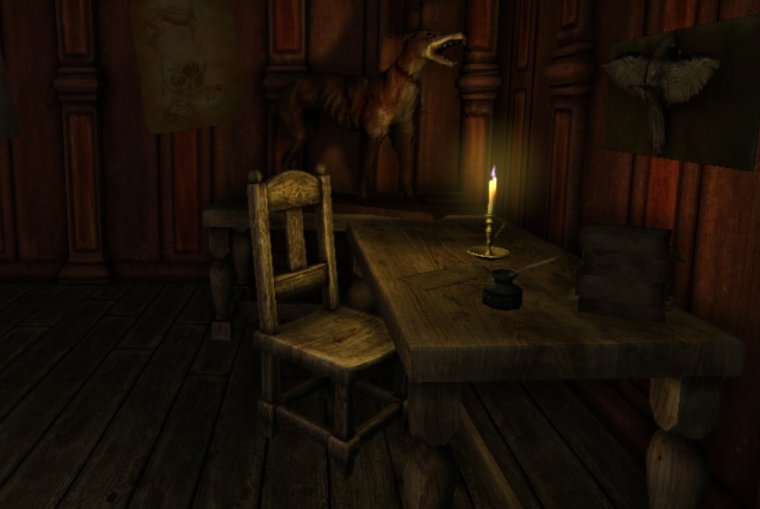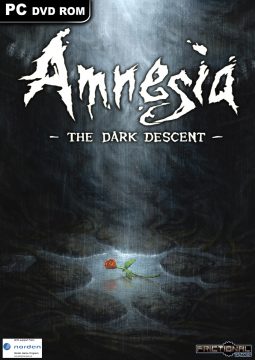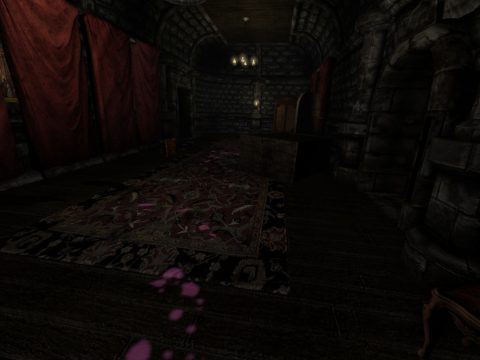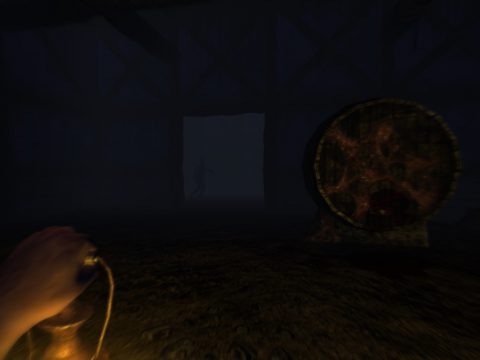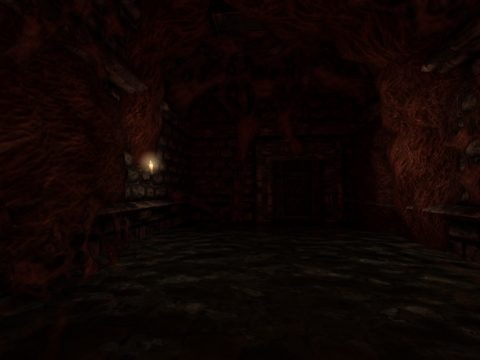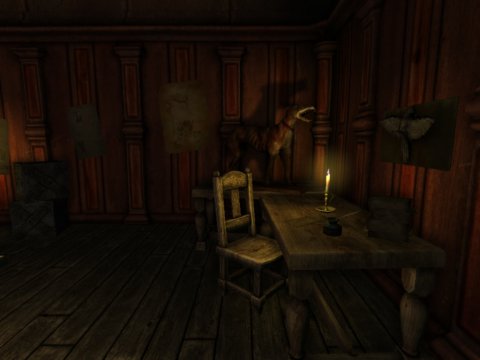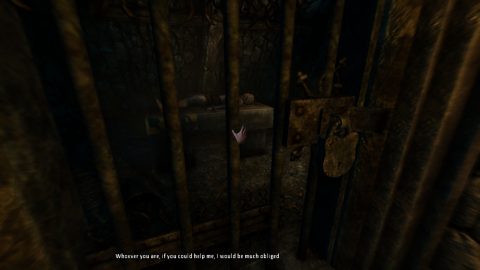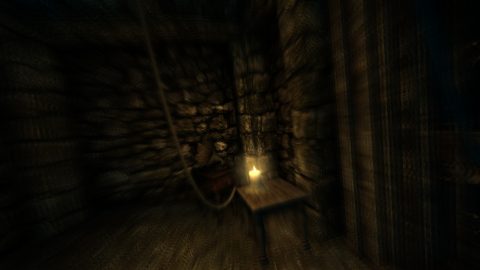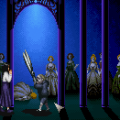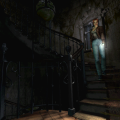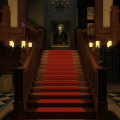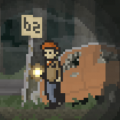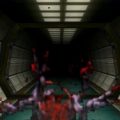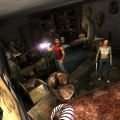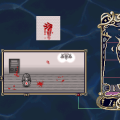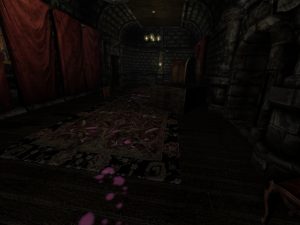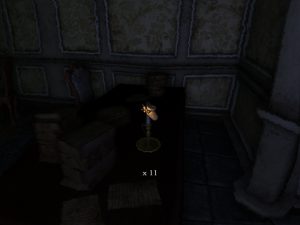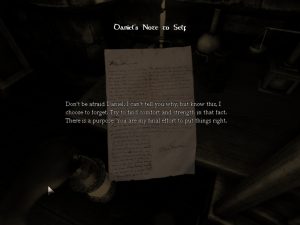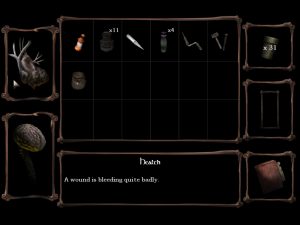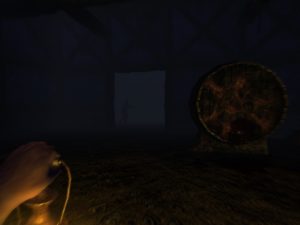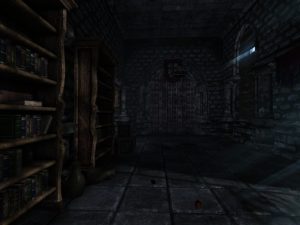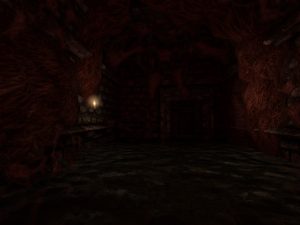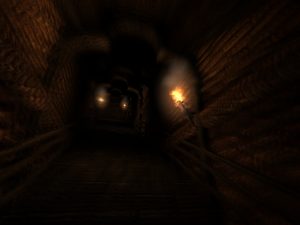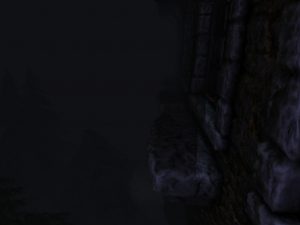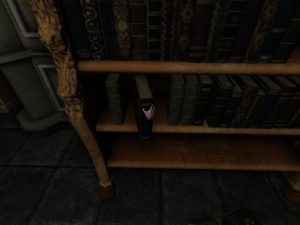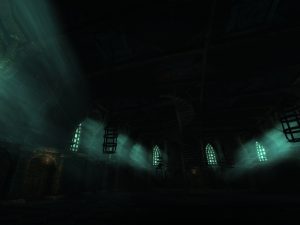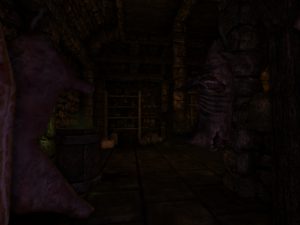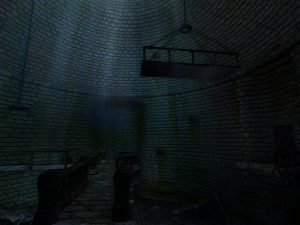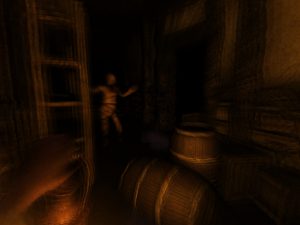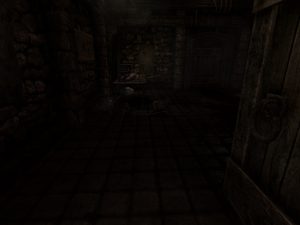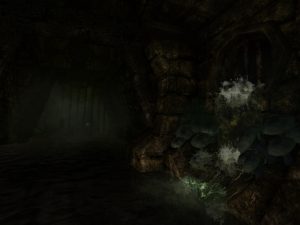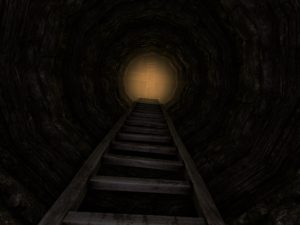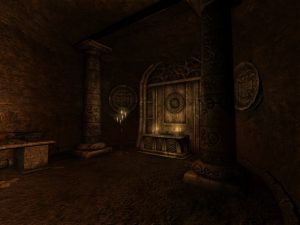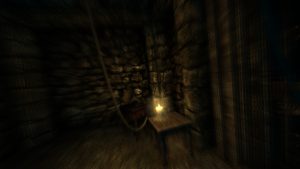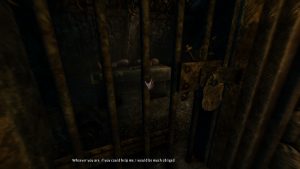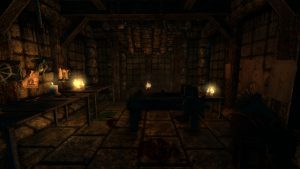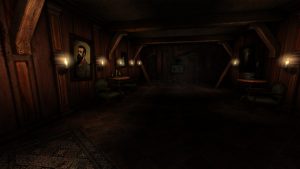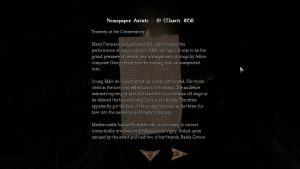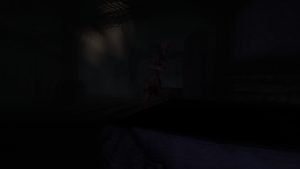- Amnesia: The Dark Descent
- Amnesia: A Machine for Pigs
It is difficulty to try and write about Amnesia: The Dark Descent in a way that does justice to the game, as any kind of detailed recommendation cannot help but to defeat its own purpose. The game’s appeal is all about mystery and the fear of the unknown. This article does its best to avoid heavy story spoilers, but analysis by definition is the very antithesis of both, and if you actually care about immersion and the power unfamiliarity, the experience will be the better the earlier you quit reading this article (or any kind of review) and start playing the game already. I’d even go as far as recommending to disable the in-game tutorials; the mechanics are not that complicated.
Amnesia begins with the protagonist waking up inside a dusty old castle, barely clinging to the memory of his own name – Daniel. Following a strange trail of purple freckles through the darkness, he soon stumbles upon a letter written by himself, telling him he drank an amnesia-inflicting potion to forget certain incidents, and one dreadful instruction: Find and murder an old man named Alexander of Brennenburg in the castle’s Inner Sanctum.
The entire game is played through Daniel’s eyes as he makes his way through the murky ruins, finding pieces of his own diary and other documents along the way, which gradually reveal the horrors that happened before the fateful drink of oblivion. Sometimes Daniel also gets visions of the past when he crosses locations that used to be familiar to him. The player remains in control during those, but the sight typically gets so bad that it’s not feasible to do anything that goes beyond continuing to walk down a straight corridor. Like in the System Shock and Bioshock series, pretty much all of the narrative happened before the game, and it’s left to the player to unearth the records of what happened. One by one, the notes reveal a truly bleak view into ancient horrors as well as the darkest voids of the human soul, and the fact that the majority of it is written by the player avatar himself makes the narrative feel all the more direct and “close to home.”
Most of the castle is shrouded in darkness, but there is an immediate sense that the shadows are not good for Daniel’s health – when staying in unlit areas for too long, his senses get twisted, he starts hearing noises and hallucinates about what may lie in the shadows. Compared to a game like Eternal Darkness, however, the “sanity effects” are rather subtle, no fourth-wall breaking stuff here. The game does a very great simulation of the need to adjust your eyes to the surroundings for a few seconds after diving into the darkness, too. Throughout the castle, Daniel finds tinderboxes that enable him to light candles and torches to drive out the darkness. He also gets a mobile light source in form of a lantern, but it has to be fueled with oil regularly.
Amnesia manages to instill a fear of the darkness into the player without throwing in any kind of horrible monster or obvious immediate threat for hours. Early on, players will find themselves clinging to brooms and chairs to arm themselves against the dangers that might lurk in the unknown. And as soon as the player gets over the fear of the darkness, the game draws attention to other menacing uncertainties, like murky water. Eventually it even drives the player to seek out the darkness, as it eventually turns out the only protection against greater evils. The castle also soon starts to get infected by an unhealthy-looking red taint, that actually hurts Daniel and obstructs his progress. On the other hand it takes its due time to introduce its monstrosities; at first you’ll just see shadows scuffling through dark corridors from afar, and for a long time it is everything but clear whether or not they’re just products of the protagonist’s imagination. When they finally strike, however, they strike fiercely, and carry more potential to inflict terror than all the creatures of Raccoon City and Silent Hill combined. The atmosphere in the castle is truly phenomenal, and the crawling bugs and other gross-out moments are genuinely disgusting.
As a kind of Immersive Simulation, Amnesia has no on-screen display whatsoever, but there is an inventory screen where it’s possible to check up on Daniel’s health and sanity, and to manage items that have been picked up on the way. Only certain items can be carried around indefinitely, while most objects are only held temporarily in front of the player’s eyes, where they can be carried around, rotated or thrown, as Amnesia uses the Havok physics engine for them.
About half of the puzzles in Amnesia are thus physics-based: Throw a rock to destroy a chain, put the cogwheels of a machine together so that they fit, or pull a bed from over a trapdoor. The other half are typical inventory puzzles, where items are combined in the inventory and applied to objects in the 3D view. Compared to the rest of the game, they’re all pretty standard survival horror fare and fairly simple to solve, but at least here they all fit in with the scenario; as Daniel descends into the lair of a mighty and mad alchemist, all kinds of weird contraptions and rituals are to be expected.
Amnesia is not without flaws, though; its humble indie origin is betrayed by the limitation of its assets. The focus on atmosphere instead of fidelity is laudable, but at certain points the lack of variety can be quite the immersion-killer, for example when it seems that Alexander was apparently the author of a book called Pflanzenreich (“Plant Realm”), and it failed horribly at retail – how else is it to be explained that he keeps several hundred copies of the work? The physics engine also quickly shows its limitations, and the distinction between what is grab-able and what is not often feels arbitrary. It’s stupid fun to pull all the books out of a shelf to throw them at the floor, but when moving on to the next shelf, all the books are apparently glued to it.
The worst problem of Amnesia has nothing to do with its budget, though; and that is the utter lack of penalty for dying. When killed, Daniel just starts out at the beginning of the current (small) map, even keeping all collected items. Therefore it’s not much of an issue that health becomes pretty much pointless in the latter half, when everything that’s a serious threat is capable of killing him instantly, but that’s not for the better. Forcing the player to start large parts of the game all over, or making the game even harder are devices that have been rightly discredited as inappropriate means to punish failure, but game designers have yet to come up with a meaningful way to replace them. In a genuine horror game, solving this problem is even more important than anywhere else: The suspension in Amnesia takes a severe hit as soon as the player realizes the complete absence of “real” danger. Resource management also loses its bite in the second half of the game. In the beginning it’s often necessary to spare light sources, but once it’s figured out when and how to best conserve them, Daniel quickly ends up with a very healthy stock of tinderboxes and a reserve of spare oil for the lamp. In a way Amnesia lasts too long for its own good, even though the official story takes less than ten hours to complete (there’s also the option to load custom-made mods, of which there’s quite a few available).
Amnesia is still a very intense experience at least in the first half, and overall one of the most frightening and unsettling games ever. Especially the extremely morbid references to torture are not for the faint of heart, even if none of it actually happens on screen. Big budget survival horror may be well underway of having abolished itself, but indie games like Amnesia prove that there is still a future for the genre.
Amnesia: Justine – Mac OS X, Linux, Windows (April 12, 2011)
Amnesia: Justine is not a standalone game, but rather free DLC for The Dark Descent. It was originally part of a Portal 2 celebration project on Steam, which consisted of 13 individual projects. It was automatically patched into the launcher a few months after the original game’s release. The player is once again put in the shoes of an amnesiac, but this time the plot takes a hint not only from Portal but also Saw. At the beginning you wake up in a prison cell with a gramophone, which is tied to a contraption required to open the door. Listening to it not only sets you free – relatively speaking – but introduces you to Justine Florbelle – apparently a sick psychopath that likes to seduce men and torture them in her lair.
Like the non-heroes in the Saw movies, the prison is shared with a number of other victims. There is always a simple way out of each puzzle room – by having the helpless inmate murdered by his personal torture device. But as Justine declares in the beginning, there is always a way. So the player is forced to chose between accounting for a gruesome death or solving a rather tricky puzzle. From Portal the game takes the female “supervisor” that keeps taunting the player, although in this case hearing the messages is mostly voluntary, activated by turning the cranks of more gramophones throughout the dungeon.
But it’s not just all quiet puzzle solving: Some of Justine’s older victims, bodies and souls severely damaged, walk freely around the perimeter, and they’re not in the best of moods considering their situation. As with The Dark Descent, all you can do is hide in the shadows or get the hell away from them. The last challenge is especially tough, because the final enemy is constantly after you while you try to solve it.
Amnesia: Justine is incredibly short. There are only really three puzzles, and those taking the easy way out of all three can probably finish the game in five minutes. But it’s a free bonus after all, so there is not much reason to complain about that. Unfortunately, the three puzzles are not very good. The first one is physics-based, but demands efforts the engine is not really up to, and as a result is just horribly annoying. The second one ist just kind of dull and easy, and if the relentless pursuer in the third part catches you once, you’re pretty much dead – upon which the program just drops you out of the game. There is no saving function whatsoever, and the quest has to be started from the beginning each time.
Likewise, not too much new work went into the assets, either. There are some new textures and objects, but in total the rooms of Justine wouldn’t have felt out of place if integrated into The Dark Descent, despite the game being set in a mansion in 19th century France, presumably near Paris. And yes, there are more copies of Pflanzenreich here. The obligatory story twist is also rather similar to the main game and leaves a bit of a stale aftertaste. All this makes Justine not really recommendable, even for free. In fact, the only purpose it really serves is building up fatigue for the series, so best avoid it and skip right to the true sequel, A Machine for Pigs.
